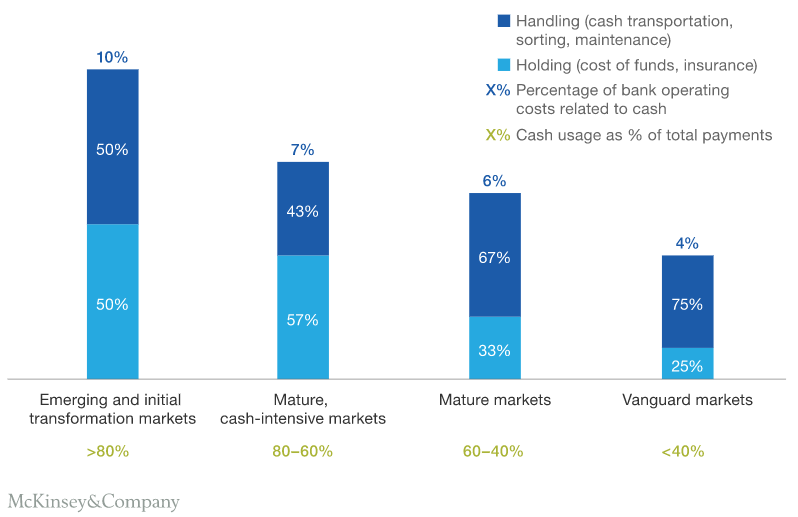The Black Ink Team's Guide to the Cost of Cash
by Black Ink Team
Retailers and businesses in general prefer to receive payments through credit, versus being handed cash, for a variety of reasons. For example, payments received through credit can be updated immediately, whereas payments received through cash must first go through multiple processes. First, the bills must be checked for authenticity – according to the United States Department of Treasury, an estimated $70 million in counterfeit bills are in circulation. Second, they must be counted. You can use machines to count cash quickly, but it is cheaper when done by hand. Lastly, the cash must be transported and given to a bank. If you go over a certain limit, a bank will charge you fees for depositing cash.

Another reason why credit is preferable to cash for retailers is that cash is riskier. Having lost of cash in your store makes you a bigger target for being robbed, so you have to add on security costs, and transporting cash can be dangerous as well. Sometimes, the people stealing cash from your business might be your employees themselves – according to a Hiscox study, U.S. businesses affected by employee theft lost an average of $1.13 million in 2016. Chances are your employees won’t feel good about being treated as potential criminals.
In a McKinsey report, they said there are three things banks can do to minimize the costs of cash transactions: apply lean processing standards to their distribution centers, ‘right-size’ their distribution networks, and enter into resource pooling agreements with their competitors. Basically, they need to reduce the time and energy that gets expended dealing with cash. Retailers can take similar steps to reduce their cost of cash. Also, if costs go down for banks then they might start raising their cash deposit limits or reducing their fees.
